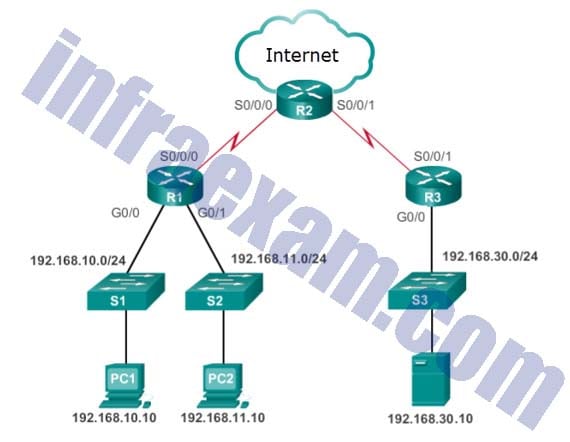Refer to the exhibit. The network administrator has an IP address of 192.168.11.10 and needs access to manage R1. What is the best ACL type and placement to use in this situation?

- standard ACL inbound on R1 vty lines
- standard ACL inbound on R2 WAN interface connecting to the internet
- extended ACL outbound on R2 S0/0/1
- extended ACLs inbound on R1 G0/0 and G0/1
| Explanation & Hint:
Access Control Lists (ACLs) can be used to restrict access to a router’s VTY (Virtual Teletype) lines for management purposes. In the scenario where a network administrator with an IP address of 192.168.11.10 needs to manage R1, the ACL should be applied to R1 to control access to its VTY lines. This is typically done with a standard ACL because only the source IP address needs to be evaluated. The best type of ACL for this situation would be:
This ACL will filter traffic coming into the VTY lines of R1, allowing only the administrator’s IP address to access the router for management while denying all others. The use of a standard ACL is sufficient since the requirement is to filter based on source IP addresses only. Here’s why the other options are less suitable:
So, a standard ACL applied to the VTY lines of R1 is the best choice to ensure that only the administrator can access R1 for management purposes. |